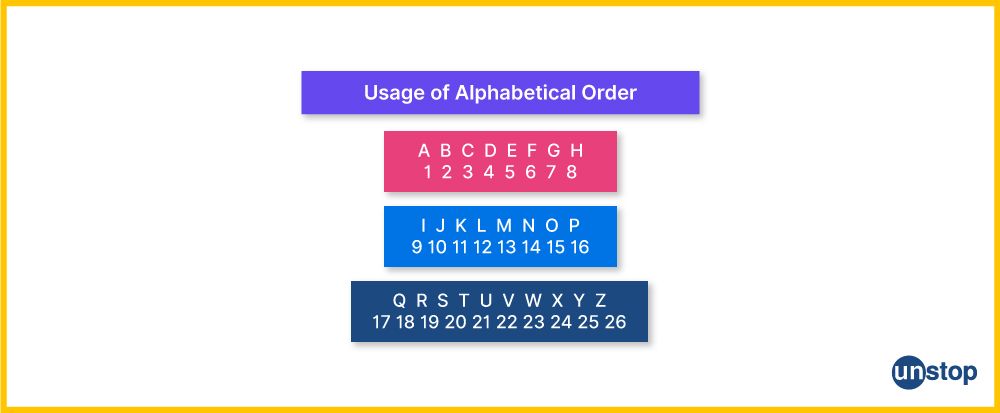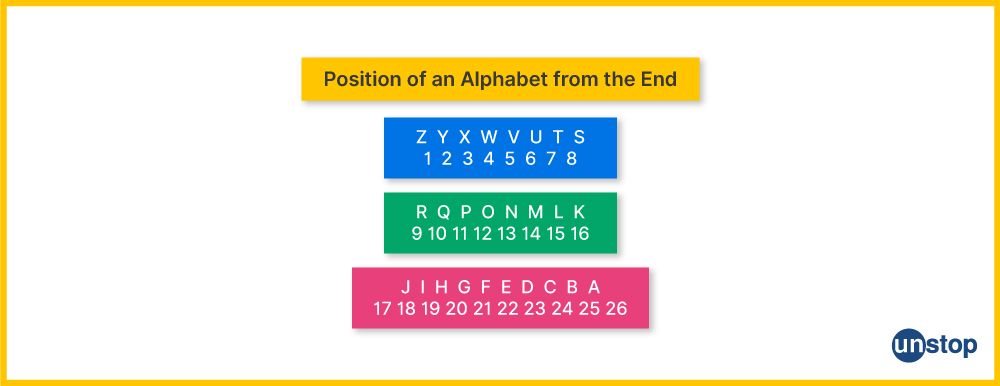- What Is Coding And Decoding?
- Usage Of Alphabetical Order When Coding And Decoding
- EJOTY Technique
- Position Of An Alphabet From End
- Tips & Tricks to Solve Coding-Decoding Questions
- Miscellaneous Examples for Coding-Decoding
- Practice Problems
- Conclusion
- Frequently Asked Questions
What Is Coding & Decoding? Tips & Tricks With Practice Questions

Coding-Decoding is an interesting topic to begin your preparations for the competitive examinations. In simple terms, it is a set of questions that are based on certain hidden rules using which the candidates have to decode the message and solve the question. Questions related to coding-decoding mostly appear in the logical reasoning sections of exams. In this article, we will look at a detailed analysis of what is coding and decoding, after which we will provide you with a range of practice questions to help you ace your exam with no difficulty.
What Is Coding And Decoding?
Coding is a process in which a word or a series of numbers are encrypted in a specific code or pattern designed based on a specific set of rules. On the other hand, decoding is the opposite process that aims to decrypt a particular code into its original form based on finding a common pattern or structure. There are various types of coding and decoding questions that appear in competitive exams. Some of the popular types are as follows:
- Letter to Letter Coding: When alphabetic letters in a word are replaced with some different alphabets by using a certain form of code or pattern, for example, using various operations such as addition, subtraction, interchanging, etc.
- Number to Letter Coding: In a given word, some numbers get replaced with an alphabet as per a particular rule, i.e., either a word is assigned a numerical code value or a number is allocated alphabetical code letters.
- Substitutional Coding: Here, the words are encoded using a special code or word.
- Chinese Coding: In this, there are statements where each statement will contain similar words as codes but in a different order. The codes of words have to be located by searching for common terms in several sentences, as the code of a word will be the same in both statements.
- LSN Coding: In these types of coding-decoding questions, the words are coded with symbols, numbers, letters, and operational signs. The reasoning behind the employment of letters, symbols, and numbers has to be deduced by the candidate.
- Conditional Coding: In this case, a few operations are given, and all the given conditions need to be applied to find the code of a given word.
- Clock coding: In this type of coding-decoding questions, numbers between 1 and 12 are coded, and the questions need to be solved on the basis of clock time.
- Binary coding: In this type of coding-decoding question, decimal numbers are coded with binary numbers such as 1 and 0.
Usage Of Alphabetical Order When Coding And Decoding
Memorizing the English alphabet and its corresponding number values may help to increase your speed. In many coding and decoding questions, the position of letters in the English Alphabet is deemed to be the value of the alphabet based on letter series.

EJOTY Technique
The EJOTY Technique is useful in finding the positions of alphabets quickly. For example, if you need to locate the position of the alphabet M, then as we can see that the alphabet O is 15, so M is 15 – 2 = 13.

Position Of An Alphabet From End
The position of an alphabet from the end can be calculated by subtracting its value from the number 27. For example, the position of D from the end is 27 – 4 (as D is the 4th alphabet) = 23. This is useful for solving a type of question that requires you to consider the position of alphabets from the end.

Tips & Tricks to Solve Coding-Decoding Questions
For prepping to master the topic of coding-decoding, it is important to be familiar with certain exam tips and tricks that will help you solve questions quickly. Following are some techniques to help you score more:
- Begin by reading the question carefully and jotting down all the important words along with their given codes.
- Try to analyze the pattern of the code that is given to you. The hit-and-trial method can be employed and checked for various rules.
- You can also use the elimination method to simplify the code and remove unnecessary values.
- It is important to note that the coding-decoding questions can be solved using more than one trick/ method.
- Solving a bunch of different types of questions will be very helpful in your preparation.
Miscellaneous Examples for Coding-Decoding
Now that we are familiar with what coding-decoding means let’s explore some of the basic problems of this topic and see how they can be solved by detecting the coding pattern.
Q1. Suppose that a particular ‘FISH’ is written as ‘GRHE’. Find out how ‘BEAR’ will be written in the same code.
Ans: QZDA. Below is an explanation of how to solve this question and decode the answer.
To solve this coding-decoding question, the word is reversed, and each letter is moved by -1. The reversed order of FISH is HSIF, now 1 is subtracted from each alphabet of HSIF. The code for FISH is GRHE. Similarly, the code for BEAR is QZDA.
Q2. In a certain code language, 'ROSE' is written as 'SOER', and 'ALSO' is written as 'SLOA'. How will 'MORE' be written in that same code?
Ans: ROEM (The explanation of how to find the correct answer is given in the image below.)

Q3. Using a particular pattern, ‘BRAVE’ is coded as ‘EUCYH’. How will ‘SMART’ be written based on the same code?
Ans: VPDUW (The image below showcases how to reach the correct answer)

Q4. If 'HEART' is coded as 'IDBQU', then how 'HEIGHT' can be written in that code?
Ans: IDJFIS (The following image shows the method of alphabetic coding used to resolve this code.)

Q5. If 'ABROAD' is written as 'SCBEBP' is a certain code. How is 'ACCEPT' written in that code?
Ans: DDBUQF (The image below shows the logic of coding and decoding.)

Q6. In a certain code, 'ETHIOPIA' is written as 83. How is 'KENYA' written in that code?
Ans: 56 Here is an explanation of the method of coding used in this question:
In ETHIOPIA,
E=5, T=20, H=8, I=9, O=15, P=16, I=9, A=1.
Total = 5+20+8+9+15+16+9+1 = 83
In KENYA
Total = 11+5+14+25+1 = 56
Practice Problems
Here are a few practice problems for you to try out on your own. The answers to the questions are provided for your reference.
Q1. In a certain code, ‘MUNDANE’ is coded as ‘LVMEZOD’. Select the right option for ‘CERTAIN’ put together using the same code.
Ans: BFQUZJM
Q2. If ‘WATER’ is coded in a certain way as ‘AWETR’. Choose the option for ‘PURPOSE’ coded in the same form.
Ans: UPPRSOE
Q3. In ‘REQUEST’ is coded in a certain pattern as ‘PFOVCTR’. Select the right option for ‘FORGIVE’ coded the same way.
Ans: DPPHGWC
Q4. If ‘BRUTAL' is coded as ‘URBLAT’ then how ‘RATIONAL’ will be encrypted in this code?
Ans: TARNOILA
Q5. In a certain code, TIGER is written as QDFHS. How is MONKEY written in that code?
Ans: XDJMNL
Conclusion
Coding-Decoding is an important topic pertaining to the logical reasoning section in competitive exams, including many prestigious exams, bank exams, engineering entrance exams, etc. With sufficient practice, one can easily score well on these types of questions. The key to cracking these questions is to identify the pattern of coding used in the question by observing the relationship between letters/numbers/symbols in the original and coded forms, respectively.
Frequently Asked Questions
Q. What is the purpose of coding and decoding?
Coding and decoding serve crucial roles in information processing, data transmission, and storage. The purpose of coding is to transform data from one representation to another, often to achieve specific objectives such as data compression, error detection and correction, or encryption. Coding ensures the efficient use of resources, enhances data security, and facilitates reliable communication. In contrast, decoding is the reverse process, converting the coded data back to its original form. This reciprocal transformation is vital for tasks like retrieving information, verifying data integrity, and deciphering encrypted messages.
Q. What is the difference between encoding and encryption?
| Feature | Encoding | Encryption |
|---|---|---|
| Objective | Transforming data for a specific purpose, often for representation or processing. | Securing data by converting it into a form that is not easily readable without the appropriate decryption key. |
| Reversibility | Usually reversible, the process has an inverse (decoding) that can recover the original data. | Typically reversible, decryption can recover the original data if the key is available. |
| Security | Not designed for security; often used for tasks like data compression, URL encoding, or data representation. | Primarily designed for security, the main goal is to protect the confidentiality of the data. |
| Algorithm Complexity | Generally, simpler algorithms with focus on efficient representation and processing. | Involves more complex algorithms, especially in modern cryptographic techniques like AES or RSA. |
| Usage Examples | Base64 encoding, URL encoding, binary encoding. | Advanced Encryption Standard (AES), Rivest Cipher (RSA), Data Encryption Standard (DES). |
Q. What are some common encoding techniques?
There are several common encoding techniques used in computing and information processing. Here are some widely used encoding methods:
- Base64 Encoding: Converts binary data into ASCII characters using a set of 64 characters (A-Z, a-z, 0-9, and two additional characters, often '+', '/'). It is commonly used for encoding binary data in text-based formats, such as email attachments.
- URL Encoding: Used to encode special characters in URLs to ensure proper transmission in web browsers. Characters such as spaces or special symbols are represented using percentage symbol (%) or percent encoding, followed by their ASCII hexadecimal code.
- UTF-8 Encoding: Part of the Unicode standard, UTF-8 is a variable-width character encoding that represents each character using one to four bytes. It is widely used for encoding text in a variety of languages.
- Binary Encoding: Represents data using binary digits (0s and 1s). This is the fundamental encoding used in computing, where everything is ultimately represented in binary form.
- Hexadecimal Encoding: Represents binary data in a human-readable format using the hexadecimal number system (base-16). Each hex digit represents four binary digits, making it more compact and easier for humans to read than binary.
- JSON (JavaScript Object Notation): While not a traditional encoding, JSON is a lightweight data interchange format that represents data in a text format. It is commonly used to transmit data between a server and a web application.
- Gray Coding: A binary numeral system where consecutive values differ by only one bit. Gray coding is often used in applications like analog-to-digital converters to reduce errors during transitions between consecutive values.
Q. How is error detection achieved through coding and decoding?
Error detection through coding and decoding involves the use of specific codes and techniques to identify and potentially correct errors that may occur during data transmission or storage. Here are a few common methods for error detection:
- Parity Bit Encoding: In this method, an extra bit (parity bit) is added to each byte or group of bits. The parity bit is set to either an even or odd value to ensure that the total number of set bits (1s) in the data, including the parity bit, is always even or odd. This allows the detection of single-bit errors.
- Checksums: Checksums involve adding a fixed-size value (checksum) to the data. The checksum is computed based on the contents of the data. At the receiving end, the checksum is recalculated, and if it doesn't match the transmitted checksum, an error is detected. Checksums are commonly used in network protocols.
- Cyclic Redundancy Check (CRC): CRC is a more sophisticated error detection technique. It involves polynomial division, where the remainder is appended to the data. At the receiving end, the remainder is recalculated, and if it doesn't match the transmitted remainder, an error is detected. CRC is widely used in networking and storage systems.
- Hamming Code: Hamming codes are block error-correcting codes that add redundant bits to the data. These redundant bits allow the correction of single-bit errors and the detection of two-bit errors. Hamming codes are commonly used in memory systems.
Q. How does Gray coding differ from traditional binary coding?
Gray coding, also known as reflected binary code, is a binary numeral system in which adjacent numbers differ by only one bit. This contrasts with traditional binary coding, where consecutive numbers can vary by multiple bits.
- The distinctive feature of Gray coding lies in its sequential arrangement, ensuring that only one-bit changes during the transition from one value to the next.
- This characteristic minimizes the risk of errors during conversions, making Gray codes particularly useful in applications such as analog-to-digital converters, where small, precise changes in the binary representation correspond to gradual changes in the analog signal.
- The minimum Hamming distance of 2 between consecutive Gray code numbers enhances error detection capabilities.
- This encoding method finds applications in contexts where a consistent bit-flipping pattern and reduced susceptibility to noise or misalignment are crucial, contributing to its adoption in mechanical encoders and various scenarios where accurate representation of sequential values is paramount.
By now you must have a clear idea of what is coding and decoding. Here are a few more interesting topics you may also like to read:
As a biotechnologist-turned-writer, I love turning complex ideas into meaningful stories that inform and inspire. Outside of writing, I enjoy cooking, reading, and travelling, each giving me fresh perspectives and inspiration for my work.
Login to continue reading
And access exclusive content, personalized recommendations, and career-boosting opportunities.
Subscribe
to our newsletter
Blogs you need to hog!

This Is My First Hackathon, How Should I Prepare? (Tips & Hackathon Questions Inside)

10 Best C++ IDEs That Developers Mention The Most!

Advantages and Disadvantages of Cloud Computing That You Should Know!













Comments
Add comment